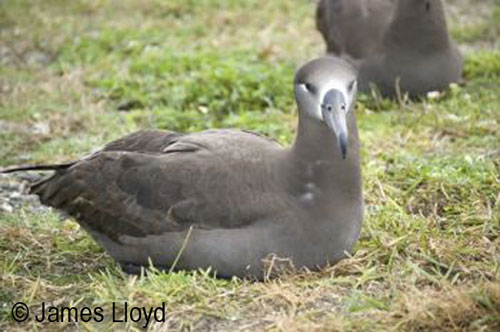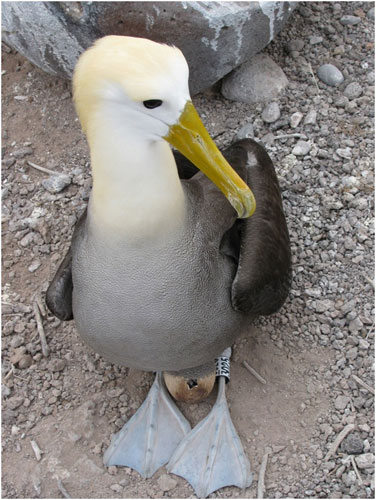Haruko Ando (Graduate School of Agriculture, Kyoto University, Japan) and colleagues have published in the journal Pacific Science on possible gene flow caused by dispersal between populations of the Black-Footed Albatross Phoebastria nigripes.
The paper’s abstract follows:
“The Black-Footed Albatross (Phoebastria nigripes) breeds in two remote regions, approximately 4,000 km apart, in the North Pacific. The population in the central North Pacific region (Northwestern Hawaiian Islands), which contains >95% of the total population, is currently stable, although concerns exist about future declines. In contrast, the population in the western North Pacific (Izu and Ogasawara Islands in Japan) is rapidly increasing, and the breeding areas are expanding. To estimate possible gene flow caused by dispersal between populations, we performed genetic analysis on six colonies of Black-Footed Albatross using 10 microsatellite markers. The central and western North Pacific populations were genetically differentiated. However, an estimation of migrants per generation indicated directional dispersal from the western to the central North Pacific. In particular, the population on Kure Atoll, the westernmost atoll in the Hawaiian Islands in the central North Pacific, exhibited weak genetic differentiation from the western North Pacific populations, suggesting frequent immigration from the western North Pacific. The recent expansion of the western North Pacific population may be due to an increase in returning individuals, which may be caused by increased breeding success rates and/or survival rates. Range-wide and long-term monitoring of the Black-Footed Albatross population using genetic markers may help to uncover dispersal dynamics of this highly mobile but philopatric albatross species and to make appropriate conservation decisions in light of environmental changes.”

Black-footed Albatross, photograph by James Lloyd
Reference:
Ando, H., Young, L., Naughton, M., Suzuki, H., Deguchi, T. & Isagi, Y. 2014. Predominance of unbalanced gene flow from western to central North Pacific colonies of the Black-Footed Albatross (Phoebastria nigripes). Pacific Science 68: 309-319.
John Cooper, ACAP Information Officer, 26 July 2014

 English
English  Français
Français  Español
Español 



 the
the